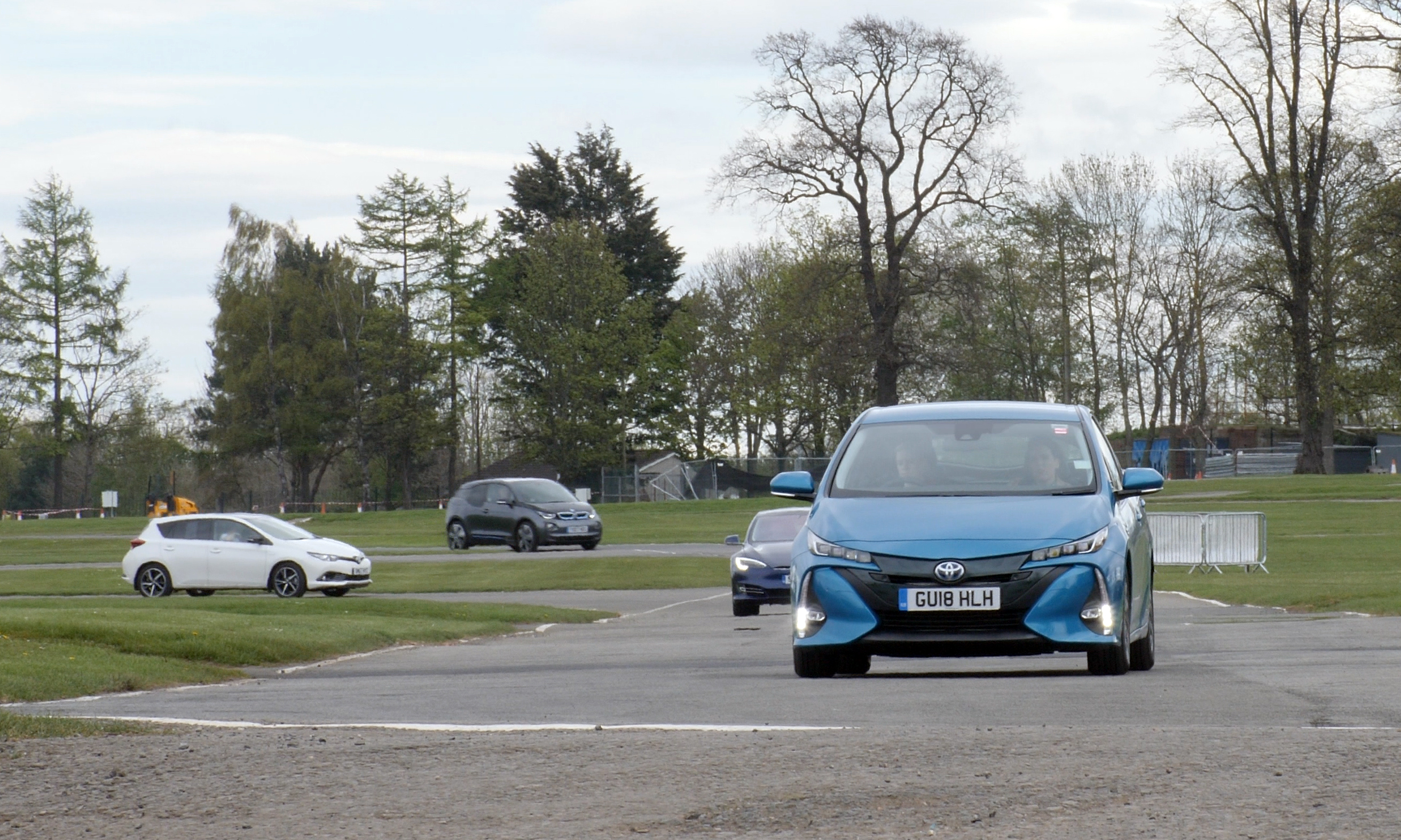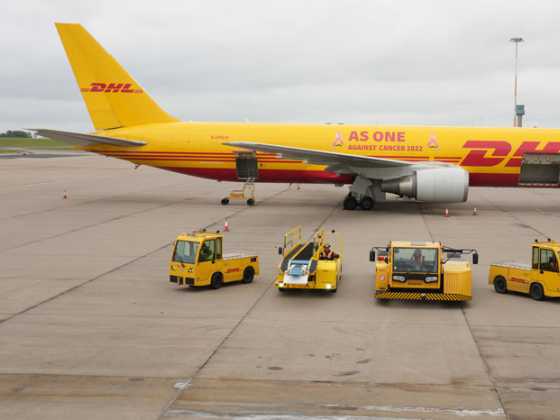Supporting Scotland's eco-goals

The exhibition floor at GreenFleet Scotland on 4 May was packed with the latest emission-friendly vehicles, technologies, products and services for fleet operators with green ambitions.
Sponsored by the Energy Saving Trust Scotland, Transport Scotland and Chargeplace Scotland, GreenFleet Scotland took place on 4 May at the Royal Highland Centre in Edinburgh and saw green superstars Tesla and BMW mingle alongside sustainable truck and van manufacturers Iveco and LDV, as well as other zero and ultra-low emission vehicles.
For the first time, the event hosted a solar PV zone, with innovative companies offering EV charging from solar energy, while the hydrogen zone made its fourth appearance, showcasing fuel cell vehicles and hydrogen refuelling solutions.
The seminar sessions delved into the pressing topics affecting fleets, such as greening commercial vehicles, air quality and lowering emissions.
Seminar sessions
Van and truck operators still rely heavily on diesel, but interest in alternative fuels is growing. Gordon Manson from the Energy Saving Trust lead the first seminar session, which covered the growing ULEV options for commercial vehicle operators.
Mark Barrett from LDV, the manufacturer of the EV80 electric van, took the second keynote slot, which examined how electric vans can save money and improve air quality.
Scotland will be introducing four Low Emission Zones, with the first one to be introduced in Glasgow by the end of the year. As such, air quality was the focus of the second seminar session. David Duffy from the Royal Environmental Health Institute of Scotland (REHIS) kicked it off with an update on Scotland’s air quality work, including how Air Quality Management areas will fit in alongside impending low emission zones, as well as an explanation on the work REHIS is doing to spur action to clean up air.
Andrew Campbell from REHIS opened his session with the question: “Why do we accept that we are breathing poor air? We wouldn’t drink water if it looked yellow.” Andrew went on to say that air pollution is mostly an invisible problem, “so if you can’t see it, you are not thinking about it.” It therefore needs to be made visual to instigate change, and the media has picked up on shocking images, which is helping to put air pollution at the forefront of people’s minds.
John Bynorth from Environmental Protection Scotland then spoke about Clean Air Day on 21 June. The day is about increasing awareness of the air pollution problem and having individuals make pledges to do something to reduce their emissions. This could include walking to work, not idling when parked up, car sharing or working from home. John also explained about the Clean Van Commitment, which will see fleets committing to zero tailpipe emissions by 2028.
The afternoon seminar was kicked off by Ellie Grebenik from the Energy Saving Trust who spoke of the results from Switched on Fleets, an initiative to provide support for public sector fleets who want to buy ULEVs.
Juliet Farquhar from Scottish Power then took to the podium to share her experience of adopting electric vans. To finish the talks, David Beeton from Urban Foresight gave an insightful look back at how far electric vehicles have come in the last 10 years, and what the future looks like.
Green power
Scotland has an impressive track record for renewables energy production. In the first six months of 2017, enough wind power was generated to supply more than all of Scotland’s national demand for six days.
What’s more, Scotland’s first energy strategy released in December stated its ambition for the equivalent of 50 per cent of the energy for Scotland’s heat, transport and electricity consumption to be supplied from renewable sources.
It is becoming increasingly understood that the greenest way to charge electric cars or produce hydrogen is from renewables. As such, this year’s event hosted the first Solar PV Zone.
The Solar Trade Association had representatives to discuss how charging electric vehicles from the energy generated from solar PVs can save money. It also reduces the ‘embedded’ emissions from using the grid.
Showcasing the products that offer EV charging from solar, as well as energy storage solutions, were AES Solar, Solar Kingdom, and Rexel. The Renewable Energy Association meanwhile shared details of its EV group which aims to accelerate electric vehicles through informing regulators and government.
Representatives from the Electric Vehicle Association Scotland were also available to discuss their work supporting EV drivers in Scotland.
Hydrogen Zone
The Scottish government sees hydrogen, as well as electricity, to make up its future energy mix. It plays a part in Scottish government’s recent energy scenario and funding has been pumped into the Aberdeen Hydrogen Bus project.
GreenFleet Scotland hosted a Hydrogen Zone, with vehicles and infrastructure showcased.
Logan Energy brought its hydrogen refuelling station, a mobile unit that can produce, store and dispense hydrogen – which should help those concerned with the limited public hydrogen refuelling infrastructure.
Co-Wheels Car Club brought along two hydrogen fuelled vehicles, the Toyota Mirai and a fuel-cell range extended electric van conversion which is being trialled by fleets. Converted by hydrogen specialists Ulemco, the hydrogen fuel-cell module is located on the roof of a Nissan e-NV200 and generates electricity to charge the battery, extending the range of the vehicle.
GreenFleet award winner ITM Power had experts on hand to answer any questions on hydrogen fuel and its supporting infrastructure
What’s more, the Scottish Hydrogen and Fuel Cell Association (SHFCA) had representatives giving an update on Scotland’s work with hydrogen.
Test drives
As expected, Tesla was a test-drive sell out, with its impressive Model X which boasts all‑wheel drive, and delivers a 351‑mile range.
BMW was also popular on the track, with its 740e PHEV iPerformance, head-turning hybrid sportscar i8, and all‑electric i3. MINI impressed delegates with its Cooper S E Countryman ALL4 plug-in hybrid electric vehicle.
Toyota had its low-emission Auris and Prius hybrids available, as well as the Mirai, the first mass-produced hydrogen fuel-cell vehicle.
Dealership Alex F Noble & Son brought along the latest incarnation of its best selling electric car, the LEAF, with its larger 40kW battery and increased range, as well as the range-improved e-NV200 van.
The UK’s best selling PHEV, the Mitsubishi Outlander was also available on the day, brought by dealership Fife Mitsubishi & Hyundai. The Hyundai Ioniq, which comes in three powertrain choices – electric, PHEV or hybrid – was also available for test drive.
Commercial vehicle operators had the opportunity to find out more about the natural gas‑powered Iveco Stralis truck and Daily van, while LDV showcased its electric EV80 van branded as a Royal Mail delivery van and EV80 electric tipper.
To discuss EV charging needs, Jorro, Tokheim and eVolt were on hand, demonstrating their range of business and home charging units.
Meanwhile Air Monitors was present to discuss its tools to measure air quality.
To help those with fleet management or financing questions, Inchcape Fleet Solutions and Daimler Fleet Management had experts available.
Meanwhile Home Energy Scotland from the Energy Saving Trust was present to explain how they can help companies’ travel become more sustainable.
For low and zero emission rental queries, Enterprise Car Club had representatives present.
EV Challenge
This year’s GreenFleet Scotland saw the return of the EV Challenge, sponsored by Inchcape Fleet Solutions, to find the most efficient driver. The first challenge saw participants drive a pre-selected route in a Kia Optima PHEV. The winner was Rob Mullen and Alan Rich.
An inter-company EV Challenge between colleagues from Central Taxis also took place, and saw Tony Kenmuir and Callum Hogg scoop the award for the third year running for the most efficient driving in a Nissan LEAF.






